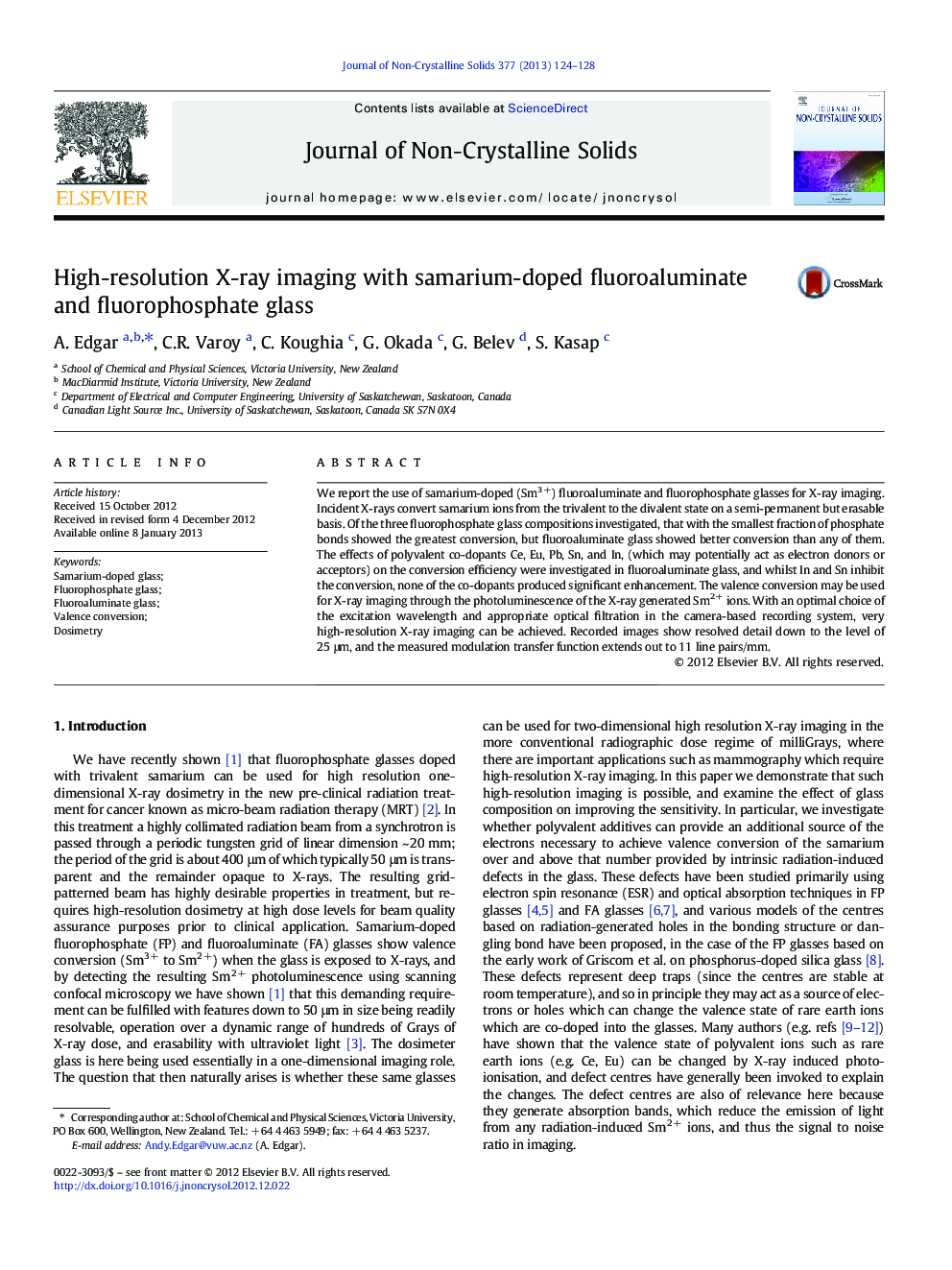| Article ID | Journal | Published Year | Pages | File Type |
|---|---|---|---|---|
| 1481230 | Journal of Non-Crystalline Solids | 2013 | 5 Pages |
We report the use of samarium-doped (Sm3 +) fluoroaluminate and fluorophosphate glasses for X-ray imaging. Incident X-rays convert samarium ions from the trivalent to the divalent state on a semi-permanent but erasable basis. Of the three fluorophosphate glass compositions investigated, that with the smallest fraction of phosphate bonds showed the greatest conversion, but fluoroaluminate glass showed better conversion than any of them. The effects of polyvalent co-dopants Ce, Eu, Pb, Sn, and In, (which may potentially act as electron donors or acceptors) on the conversion efficiency were investigated in fluoroaluminate glass, and whilst In and Sn inhibit the conversion, none of the co-dopants produced significant enhancement. The valence conversion may be used for X-ray imaging through the photoluminescence of the X-ray generated Sm2 + ions. With an optimal choice of the excitation wavelength and appropriate optical filtration in the camera-based recording system, very high-resolution X-ray imaging can be achieved. Recorded images show resolved detail down to the level of 25 μm, and the measured modulation transfer function extends out to 11 line pairs/mm.
► Substantial radiation-induced valence change of samarium ► Photoluminescence of Sm2 + as a basis for X-ray imaging ► Very high resolution X-ray imaging achieved to 25 μm scale ► Thermal enhancement and erasability of conversion
